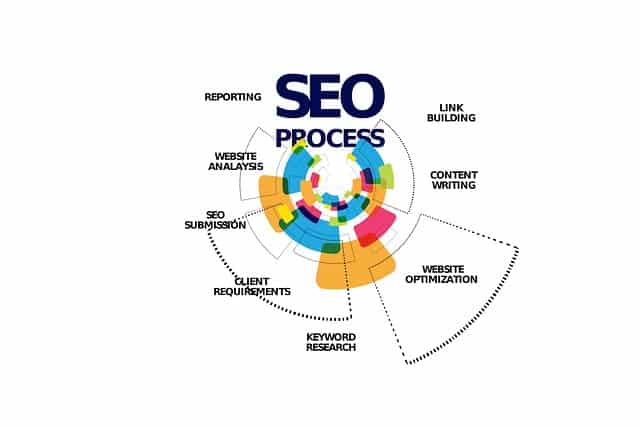
Introduction
In the ever-evolving world of digital marketing, staying on top of the latest SEO updates is crucial for maintaining a competitive edge. With Google being the dominant search engine, understanding and adapting to its algorithm changes is paramount. In this article, we will delve into Google’s latest SEO updates and explore how you can leverage them to improve your website’s rankings. Let’s dive in!
1. The Core Web Vitals: Enhancing User Experience
One of the significant updates introduced by Google is the emphasis on Core Web Vitals. Core Web Vitals measure key aspects of user experience, including page loading speed, interactivity, and visual stability. Websites that offer a seamless and delightful user experience tend to rank higher in search results. To optimize your website for Core Web Vitals, focus on enhancing factors such as reducing page load times, improving server response times, and minimizing layout shifts.
2. Mobile-First Indexing: Prioritizing Mobile-Friendly Websites
As the number of mobile users continues to soar, Google has shifted to mobile-first indexing. This means that the mobile version of your website takes precedence over the desktop version when it comes to indexing and ranking. To ensure your website is mobile-friendly, adopt a responsive design, optimize images and videos for mobile, and use legible fonts. Additionally, prioritize mobile usability by making sure buttons and navigation menus are easily clickable and accessible.
3. E-A-T: Expertise, Authoritativeness, and Trustworthiness
Google’s E-A-T algorithm update emphasizes the importance of expertise, authoritativeness, and trustworthiness in evaluating the quality of web content. To enhance your website’s E-A-T score, showcase your expertise through high-quality, well-researched content authored by credible professionals. Establish your website as an authority in your niche by obtaining backlinks from reputable sources. Build trust with your audience by ensuring your website is secure, transparent, and free from spammy practices.
4. User Intent: Contextual Relevance Matters
Understanding user intent is crucial in providing relevant search results. Google’s algorithm now prioritizes websites that align closely with the user’s search intent. To optimize for user intent, conduct thorough keyword research and create content that directly addresses the needs and queries of your target audience. Use long-tail keywords and incorporate them naturally into your content, ensuring a seamless and valuable user experience.
5. Featured Snippets: Aim for Position Zero
Featured snippets, also known as position zero, are displayed at the top of search results, providing concise answers to users’ queries. Optimizing your content for featured snippets can significantly increase your visibility and drive organic traffic. To increase the chances of obtaining a featured snippet, structure your content using subheadings, provide clear and concise answers to commonly asked questions, and format your content in a way that is easy for search engines to crawl and understand.
6. Local SEO: Targeting Your Local Audience
Google’s latest SEO updates also emphasize the importance of local SEO. For businesses targeting a specific geographic area, optimizing your website for local search results can be highly beneficial. Start by creating a Google My Business profile and ensure that your business information is accurate and up to date. Incorporate location-specific keywords in your content, meta tags, and headings to improve your visibility in local searches. Encourage customer reviews and testimonials to build trust and credibility within your local community.
7. Voice Search Optimization: Meeting the Rise in Voice Queries
With the increasing popularity of voice assistants like Siri, Alexa, and Google Assistant, voice search optimization has become crucial. Users often phrase their voice queries differently than traditional text-based searches. To optimize for voice search, focus on conversational keywords and long-tail phrases. Anticipate the natural language queries your target audience might use and incorporate them strategically within your content. Providing concise and accurate answers to common voice queries can help you rank higher in voice search results.
8. High-Quality Content: The Foundation of SEO Success
Despite all the algorithm updates, high-quality content remains the cornerstone of SEO success. Google prioritizes websites that offer valuable, informative, and engaging content to users. Invest in creating comprehensive, well-researched articles, blog posts, and guides that address the needs and interests of your target audience. Incorporate relevant keywords naturally and avoid keyword stuffing. Regularly update your content to reflect the latest information and trends in your industry.
9. Backlinks and Authority: Building a Strong Link Profile
Backlinks continue to be a vital factor in Google’s ranking algorithm. However, the focus has shifted from quantity to quality. Building a strong link profile involves obtaining backlinks from authoritative and relevant websites. Develop relationships with industry influencers, participate in guest blogging opportunities, and create valuable content that naturally attracts backlinks. Avoid spammy link-building tactics, as they can result in penalties from Google. Remember, earning high-quality backlinks takes time and effort, but the long-term benefits are worth it.
10. Monitoring and Analytics: Track Your Progress
To gauge the effectiveness of your SEO efforts and identify areas for improvement, monitoring and analytics play a crucial role. Utilize tools like Google Analytics and Google Search Console to track key metrics such as organic traffic, click-through rates, and bounce rates. Monitor keyword rankings and identify opportunities to optimize your content further. Regularly review your website’s performance and make data-driven decisions to refine your SEO strategy.
Conclusion
In the ever-changing landscape of SEO, staying ahead of Google’s latest updates is vital for maintaining a competitive edge. By optimizing for Core Web Vitals, prioritizing mobile-friendliness, focusing on E-A-T, understanding user intent, targeting local audiences, optimizing for voice search, creating high-quality content, building a strong link profile, and monitoring your progress, you can position your website for success in search engine rankings. Remember, SEO is an ongoing process, so stay proactive, adapt to changes, and consistently strive for excellence to outperform your competitors and achieve long-term success.




























